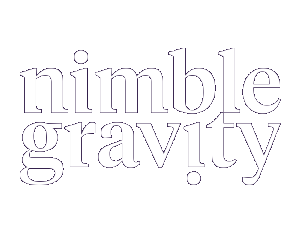Warren Buffet either coined (or at least made popular) the concept of an economic moat – something that protects a company’s market position allowing it to grow in some differentiated way.
When data that’s really hard or impossible for another company to obtain is a strategic advantage, that’s a data moat. We like to say that you can’t spell advantage without data.
In today's “data is the new currency” era, data can be a strategic advantage. If there’s a unique data asset that can be used to attract and retain customers in some kind of a self-perpetuating cycle where the moat fuels business growth (and itself), it’s pretty sweet.
Unraveling the Data Moat
A data moat is a robust, defensible position that a company can establish by harnessing typically proprietary data in ways that create barriers for competitors to overcome.
It's not just about amassing vast amounts of data – anyone can fill petabytes of storage with meaningless drivel; it's about possessing the right kind of data – data that can be used to improve operations, customer interactions, go-to-market motions, and market insights. The moat can also be something that the business sells, either as its core business or as some incremental offering.
When utilized effectively, this data enables a business to win new customers and retain existing customers, generating even more valuable data in the process, creating a virtuous cycle.
Moat begets moat.
What Makes a Data Moat Formidable
The foundation of a data moat lies in gathering unique data. This could involve tapping into specialized sources, employing innovative data-gathering techniques, or deriving new insights from existing datasets. The goal is to develop a dataset that your competitors cannot easily replicate.
There are some primary patterns for what that typically looks like:
- Long Tail Aggregation or Integration: This is perhaps the most common type of moat. A list of all the X types of things in the world that took a lot of effort to amass. Businesses, organizations, people, products, schools – the list goes on. Can you be the LinkedIn or Google Street View of your industry or space?
- Contributed or Created Content: Review sites, forums, etc. – anywhere that has enough content to be an attractant for more content. Think Yelp or Reddit.
- Exhaust: Data that a business generates from one activity that turns out to be super useful for another activity.
- Licensing or Co-op: Sometimes a business gets a moat full of data by licensing it from other companies or even getting it from other companies or people gratis as part of a give to get or co-op type arrangement. This is something that “alt-data” companies do, sometimes on both sides of the equation.
Merely possessing proprietary data is just the beginning. Sometimes, the true power lies in applying advanced analytics to unlock its full potential. Techniques such as predictive analytics, machine learning, and AI-driven insights can transform raw data into a strategic asset, providing foresight and actionable insights that can dramatically influence decision-making processes.
A data moat is not a static asset; it requires continuous refinement and enhancement. Data goes stale, competitors catch up. Regularly updating your data collection and analysis methodologies, ensuring that your data moat remains relevant and powerful as market dynamics evolve, is paramount.
The Advantages of a Robust Data Moat
Building a formidable data moat offers several tangible benefits:
A well-crafted data moat creates a barrier that competitors struggle to overcome, making it harder for them to replicate your successes or catch up.
By understanding customer needs and market trends better, you can tailor your offerings to meet demand more effectively, thereby attracting and retaining more customers.
Data-driven insights can streamline operations, reduce costs, and enhance productivity, directly impacting your bottom line.
A warning. If you think “everything will be great when we have a moat” think about how the castle came into existence. Did the castle builders make a moat around a barren piece of land or did they first make some walls or even a castle with fancy castle things like ramparts and towers and only dig a trench and fill it with water at that point? I’m not an expert on castle construction but I think the answer is probably pretty obvious.
Making a Moat
So, how do you begin building your own data moat? Start by assessing your current data capabilities and identifying gaps in your data collection and analytics processes. Consider partnering with a data science consulting firm that can help you develop unique data collection strategies, implement advanced analytical tools, and integrate data across your business.
Nimble Gravity’s consulting services help businesses build and maintain robust data moats. We provide expertise in data collection, analytics, and strategic data utilization that can transform your proprietary data into a formidable competitive advantage.
In the business world, data reigns supreme – but not all data is created equal. Building a data moat with unique, proprietary datasets and sophisticated analytics can set your company apart.
If you're ready to build your data moat and harness the power of data, contact us today. Let's create a data-driven strategy that not only protects but also significantly propels your business forward.














.svg)
